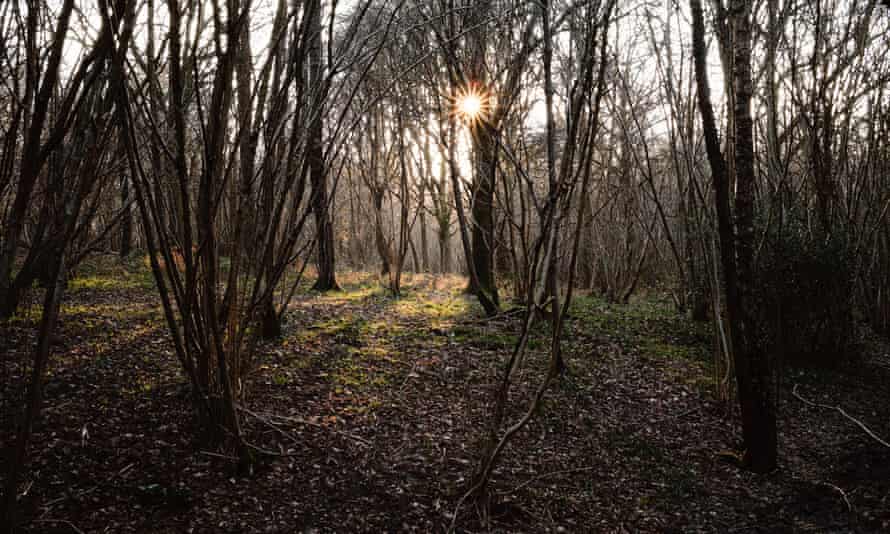On the outside edges of the wood, grey willow branches are bristling with furry, silver catkins. These catkins are the male flowers, and, when ready, will rely on the breeze to carry pollen to the female catkins on separate trees. This avoids self-fertilisation and ensures that the willows’ genes are spread to different plants to help the population stay diverse and adaptable.
I climb the muddy hill into the wood, and follow the broad track that winds beneath the stretching, bending arches of coppiced trees. I stop and listen to the soft seeps and whistles of the tits and goldcrests as they roam through the dark, bare branches and twigs. The songs of blue tits are ringing out, like the chimes of little clocks. Great tits’ see-saw songs echo through the canopy – first one bird sings, then another answers, then a third and a fourth. Tall silver birches reach up to the blue sky, their tops shining gold and red in the setting sun.
At my feet, blades of grass are rising from the leaf litter. Among them are two small primroses, each with five pale, lemon-yellow, heart-shaped petals circling a deeper yellow centre. Primrose flowers come in two types: pin-eyed and thrum-eyed. In the pin-eyed flower, the male pollen-bearing anthers are hidden down in the long tube that supports the petals, while the female stigma sits at the tube’s top, in the flower’s central mouth. The thrum-eyed type has its anthers at the top of the tube and the stigma down inside.

When an insect, such as a brimstone butterfly, visits a thrum-eyed primrose and reaches inside for nectar, its long proboscis picks up the pollen from the anthers at the top of the flower’s centre. And when it then visits a pin-eyed type and feeds again, its proboscis spreads the pollen on the stigma. As with the grey willow, this avoids each plant being fertilised by its own pollen. Across the woodland floor are the fleshy leaves of more primroses, their flowers still to emerge.
I suddenly become aware of the darkness and cold, and head for home, walking in the direction of the sun – now a large orange-red disc sinking behind the trees. Above me, a song thrush repeats its short, merry phrases.